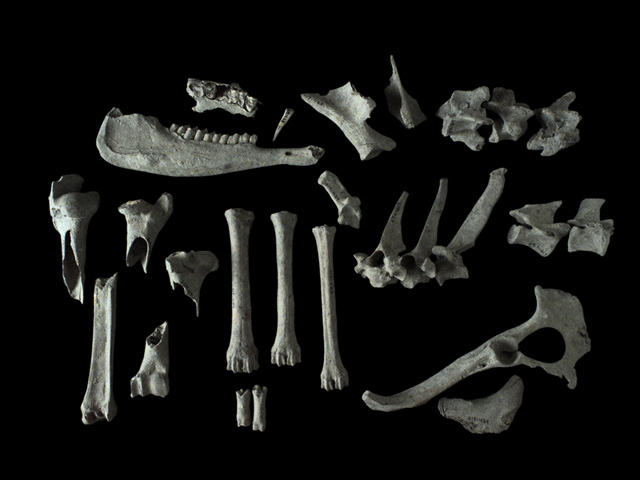 STUDIO PHOTOGRAPHS
STUDIO PHOTOGRAPHSIntroduction | Research | People | Tools
 STUDIO PHOTOGRAPHS
STUDIO PHOTOGRAPHS
BONES OF GOAT OR SHEEP (TYA 619: 429)
Type: Bones of goat (Capra hircus) or sheep (Ovis aries).
Use: Domestic animal (faunal residue).
Site: Raisio, Ihala, Mulli abode.
Period: Viking Age / Crusade Age / Early Middle Ages.
Dating: 980-1220 A.D
Size: 103 mm x 32 mm x 6 mm.
Photographer: Antti Huittinen.
The skeletal structure of a goat or a sheep is so similar that they cannot be separated, if the skeleton has not been preserved in its entirety. Goats or sheep have been bred in Finland from the Bronze Age onwards (i.e. the years 1500-500 B.C.). These animals have provided an excellent addition to the nourishment both in meat and in milk. In addition, sheep wool has been an important material for textiles. Wool suits best for a cold climate because the fibres insulate the heat perfectly.
In Finland, during the Iron Age, clothing was made mostly of wool, although flax and nettle could be used, too. The making of woollen cloth is very slow. Wool must be carded, then spinned with a spindle, and finally woven on a loom. Traditionally the sheep were clipped three or four times a year. The best quality wool was available in the Autmn, after the pastoral season.
The bones of both young and old goats have been found in the Mulli abode.Young animals could be slaughtered and their meat would be used. Or they could be allowed to grow old and be used as source of wool and milk. The sheep fleece, for example, could be curried into warm coverlets. A horn of an oaf, or a ram, could be used as a musical instrument.
Other pictures:
Other related topics:
Coordinates: x=101, y=502, 3rd layer.
Introduction | Research | People | Tools